Beau Geste
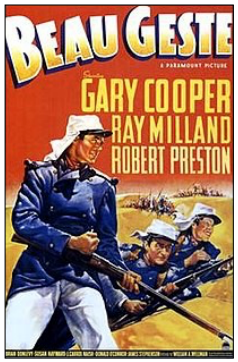
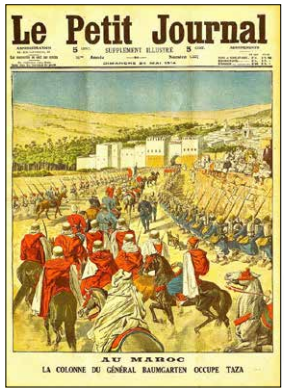
(published 1863-1944)
Beau Geste was a 1939 American adventure movie, starring Garry Cooper, based on a 1924 novel by P.C.Wren. It was set in a desert fort. This was the second attempt to film the story. A third version appeared in 1966. Such exciting images provided excellent inspiration for war games with toy soldiers.
Following the decline of the Ottoman Empire, French troops had invaded Algeria in 1830. From 1848 until independence in 1962, the French regarded Algeria as an integral part of France.
The French Colonial Empire established a protectorate in Morocco between the years of 1912- 1956 through a policy of indirect rule. Between 1914 – 1921 Berber tribes staged a running conflict, primarily a guerrilla warfare campaign, to which the French responded militarily.
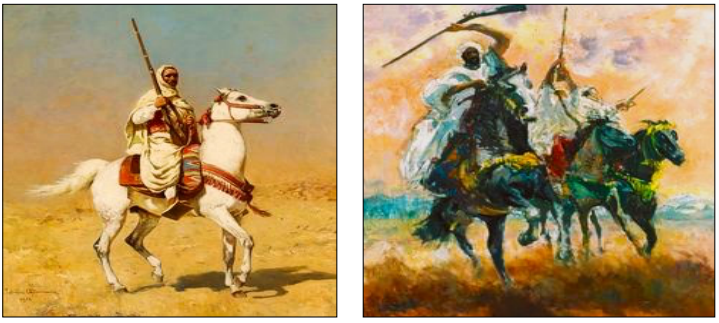
The French Protectorate of Tunisia lasted from 1881-1956, following the French invasion in 1881.
Britains in North Africa, 1905-1966
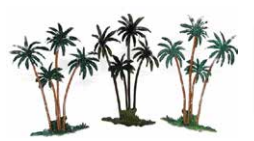
Movies like Beau Geste gave a romantic impression, which almost certainly did not reflect the realities
of the times, with French colonization and the subsequent conflict across their North African colonies of Morocco, Algeria and to a lesser extent-Tunisia.
The cinema created a glamourous image of the Legion which may have prompted Britains to produce their set #1711 in 1939. Of course, these were just playthings. But like Britains Cowboy sets, where the Indians were the adversaries, in this case we have the French versus their Arab foes.
Set #1711 was just the latest in a long line of Britains’ depictions of French Army types. Inspired by their colorful uniforms, Britains had been producing such troops since 1905.
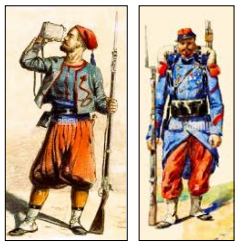
Movies like Beau Geste gave a romantic impression, which almost certainly did not reflect the realities
of the times, with French colonization and the subsequent conflict across their North African colonies of Morocco, Algeria and to a lesser extent-Tunisia.
The cinema created a glamourous image of the Legion which may have prompted Britains to produce their set #1711 in 1939. Of course, these were just playthings. But like Britains Cowboy sets, where the Indians were the adversaries, in this case we have the French versus their Arab foes.
Set #1711 was just the latest in a long line of Britains’ depictions of French Army types. Inspired by their colorful uniforms, Britains had been producing such troops since 1905.
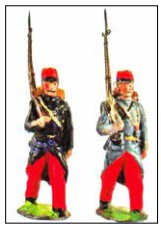
Set no. 141, French Infantry de Ligne, was Britains’ first attempt to portray French uniforms. The oval-based first version initially wore dark blue greatcoats, later changed to the ‘’horizon blue’’ colour, adopted by the French army in 1915. Later versions adopted a blue rather than red kepi. Set no. 1711, required just a change to the white kepi to create the famous Foreign Legion!
Set No. 142 depicted French Zouaves, 1905—1966. The composition and labeling of the set changed over the years, from the original Printers label to the illustrated Whisstock version, and finally the more familiar ROAN.
The earliest sets had a fixed arm officer. By the end of production, the
officer had been given a horse!
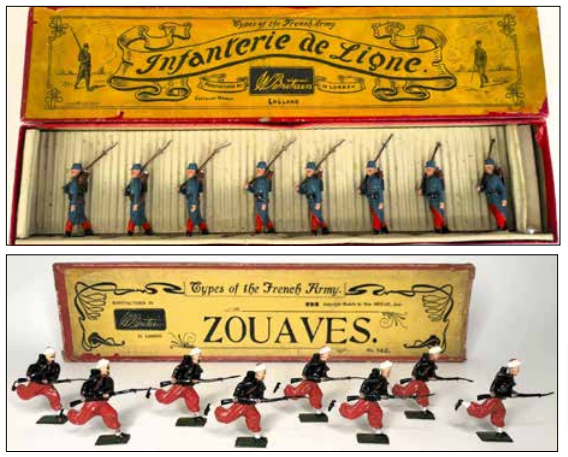
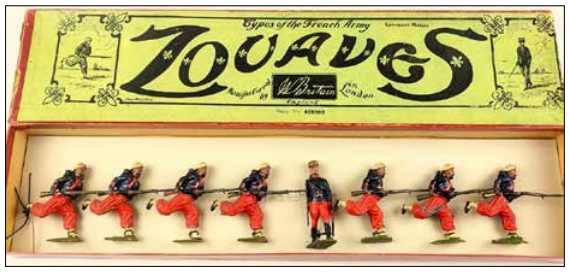
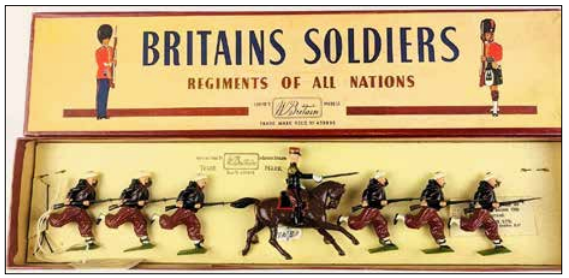

Set No. 164, Arabs mounted (on Horses), 1911-1966, with a post WW II box. The original Whisstock
illustrated label was entitled ‘Bedouin Arabs’.
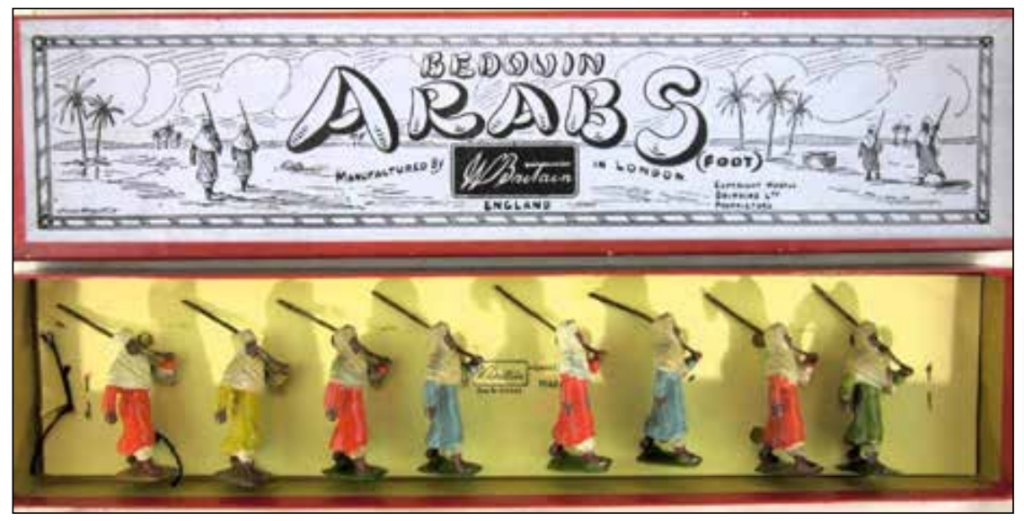
Set No. 187, Arabs on Foot, 1914- 1960, was introduced a few years later, possibly influenced by the Paris Office, which was by then in full production
The first version of the set used the illustrated Whisstock label. The earliest sets are often on green bases.
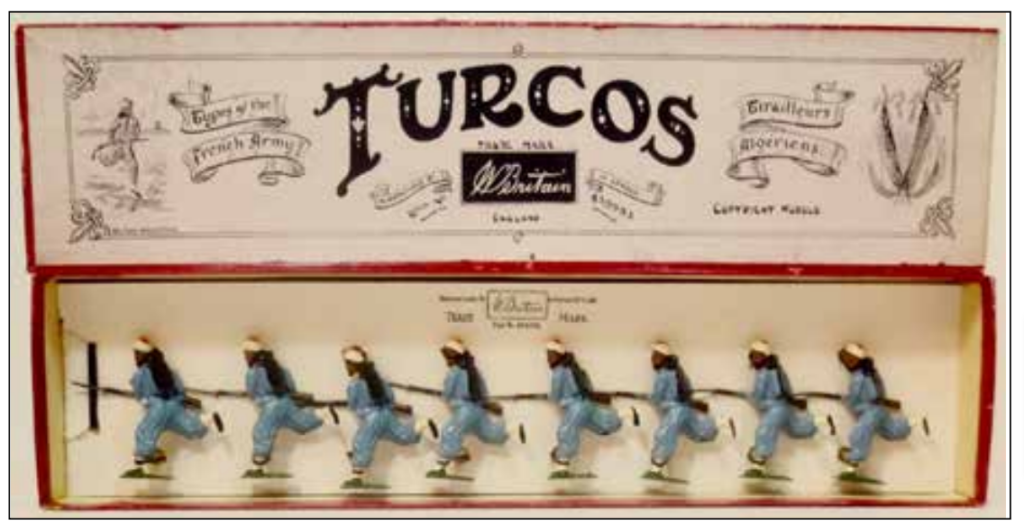
Set No. 191, French Turcos, 1915-1941.
Here is an early set with the Whisstock label, used up until 1944.
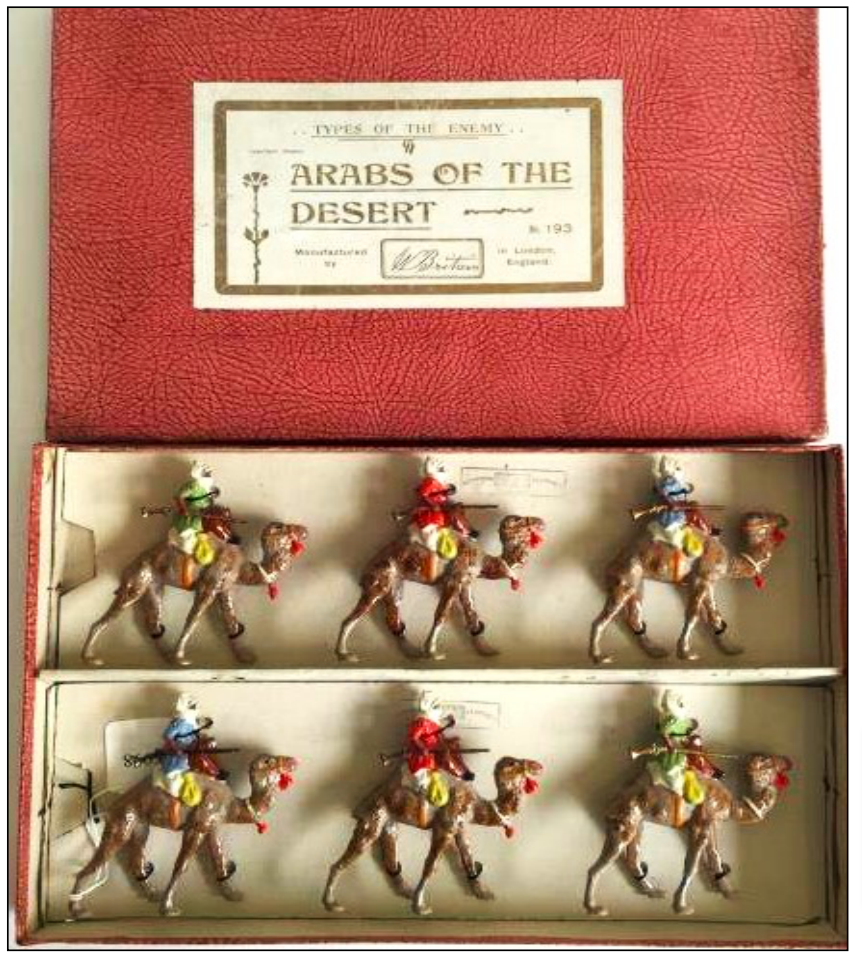
Set No.193, Arabs on Camels, 1916-1941. This magnificent figure may well have been inspired by the Paris Office.
The example shown here has a Printer’s label –Types of the Enemy, Arabs of the Desert, on an unusual textured box.
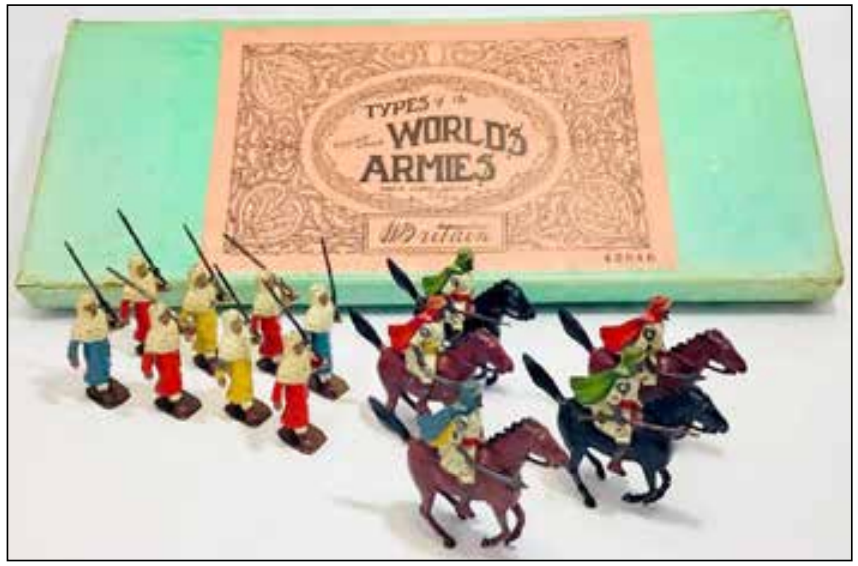
Set No. 223 contained Arabs mounted on horses and on foot. It was sold from 1925-1941. The set contained figures from sets 164 and 187. Here the set is housed in a late issue green box, with a generic Armies of the World label.
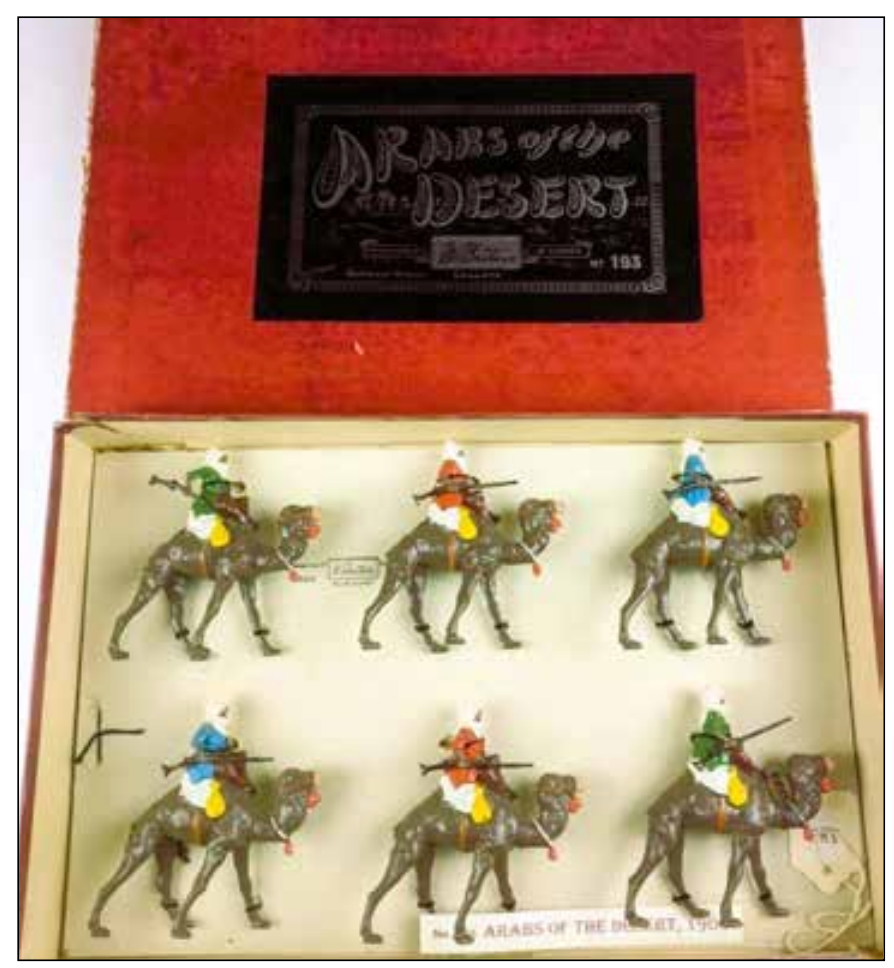
This example of Set No. 193 shows the more common Whisstock label
These figures must have been very popular amongst the buying public as Britains offered them in a large variety of permutations and combinations.
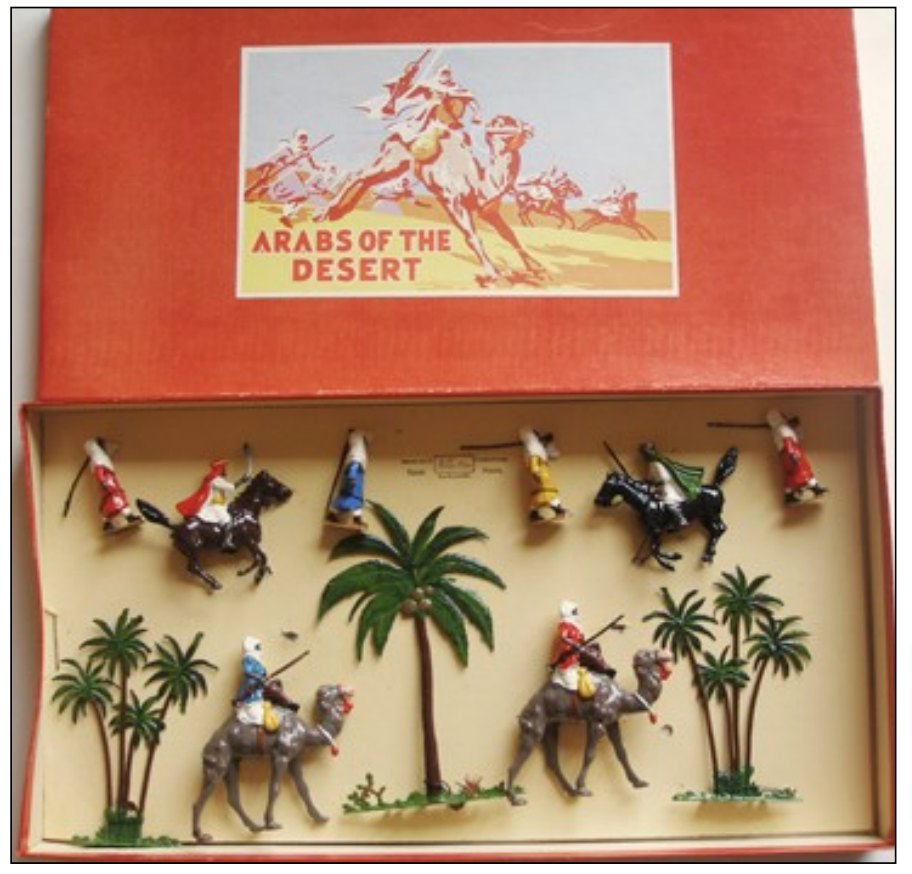
Set No. 224 comprised Arabs mounted on horses, and camels, with more on foot, as well as palm trees. It was available from 1924-1965. This example shows the colourful new label introduced about 1950. Earlier versions used a generic Whisstock label.
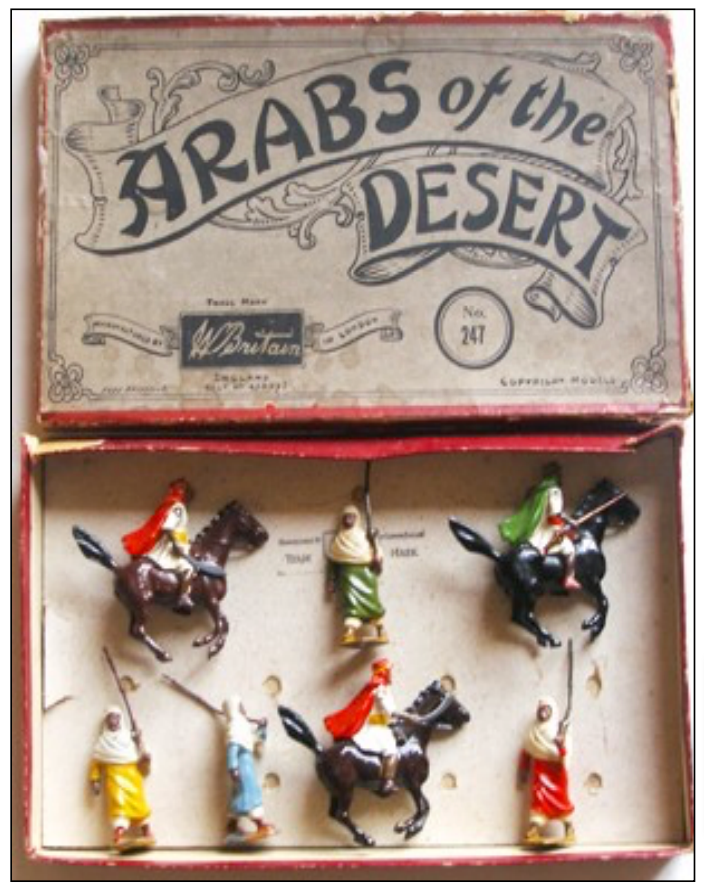
Set No. 247, Arabs Mounted and Dismounted,
1927-1941, was a smaller version of Set No. 223,
probably produced to meet the requirements of
particular retailers. It contained just 7 figures
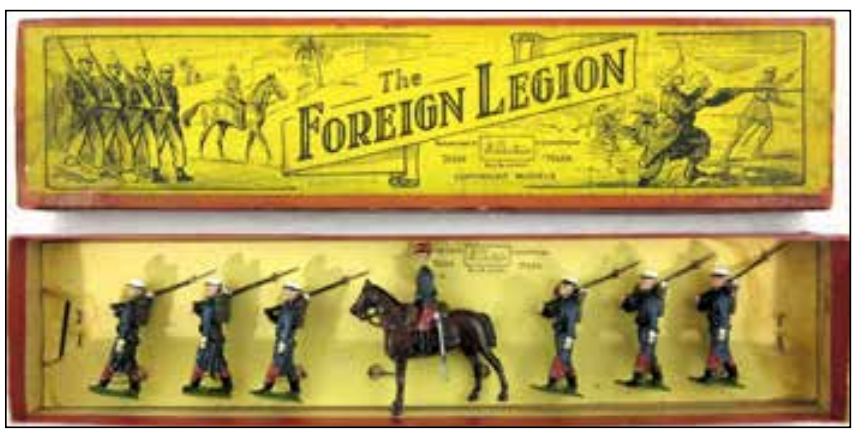
As noted above, Set No. 1711, French Foreign Legion, marching at the slope with mounted officer, was introduced in 1939. The set was very popular, and production continued post-war until the end of hollowcasting.
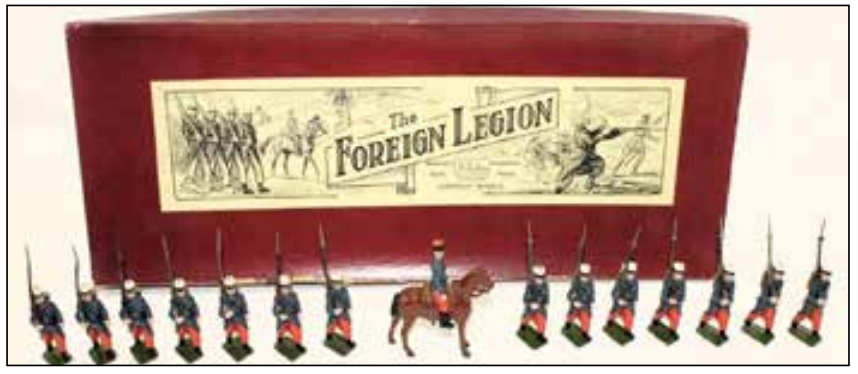
Set No. 1712, French Foreign Legion Display Set, was a short-lived two row version of Set No. 1711, produced for just a couple of years, 1939 1941.
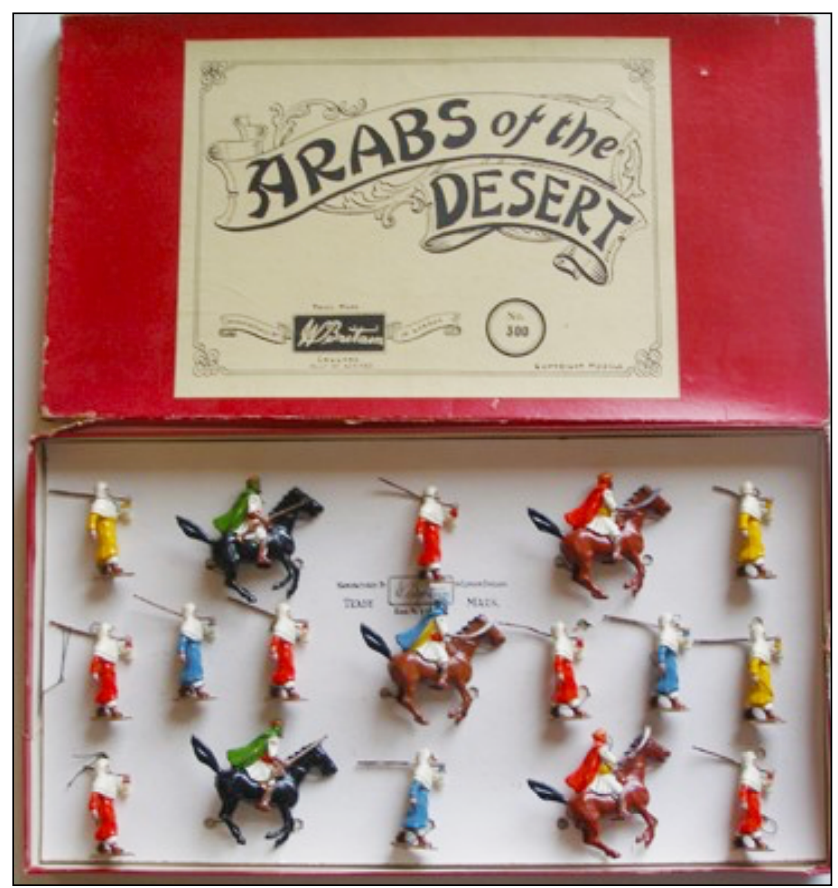
Set No. 292 was another combination containing 15 Arabs mounted and on foot. Set No. 300 was an even larger version with three rows of figures.
Other combinations were available, including the rare Set No. 301, Arabs Mounted and on Foot with Bell Tent, 1929- 1941. We have not been able to find an image of this set.
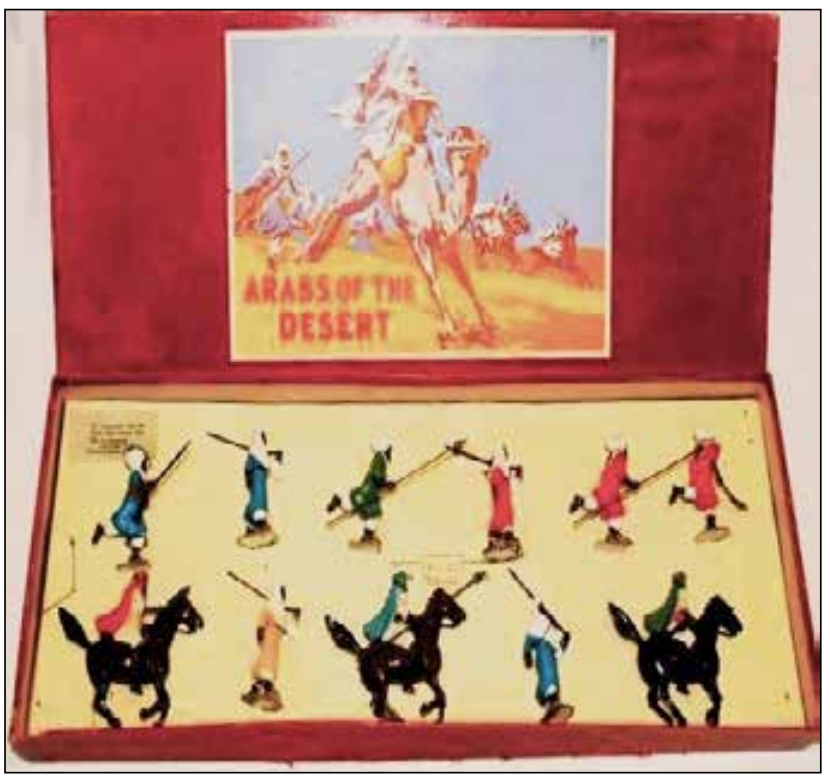
This was however the exception, as Britains continued to innovate and introduce new sets and figures to cater for those keen to reenact the wars in the desert. For example, Set No. 2046, Arabs of the Desert mounted and on foot, introduced new running figures with various weapons and was available from 1950 -1966.
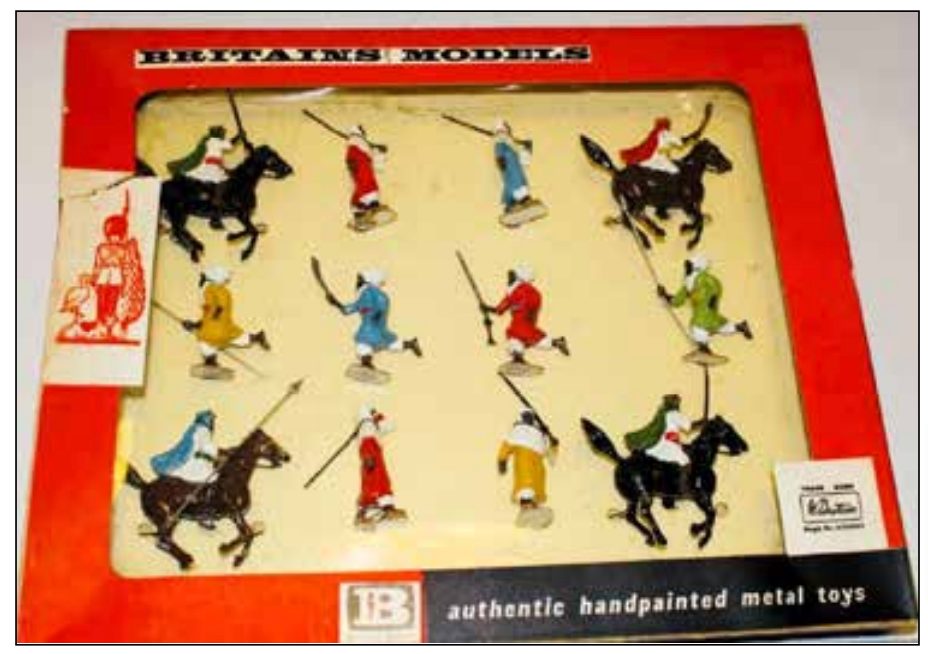
This was later renumbered as Set No.9391, as part of the 9000 series. The new version had a cellophane fronted box to display the figures and was sold from 1962-1966. Britains explored a range of ways to market these ever-popular figures. This included the so called “half sets”, half the size of a normal Britains single row box, containing just 3 or 4 figures, as well as individual figures in “Picture Pack” boxes.
The “Half Sets” and Picture Packs
The “Half Set” range comprised around 30 sets, numbered 2118-2147. They were only available in 1957, 1958 and 1959 catalogues. With a specially designed label, the sets were literally half the normal sized sets, but were made up from combinations of previously available castings, albeit with a few paint variations. They were probably aimed primarily at the collectors’ market.
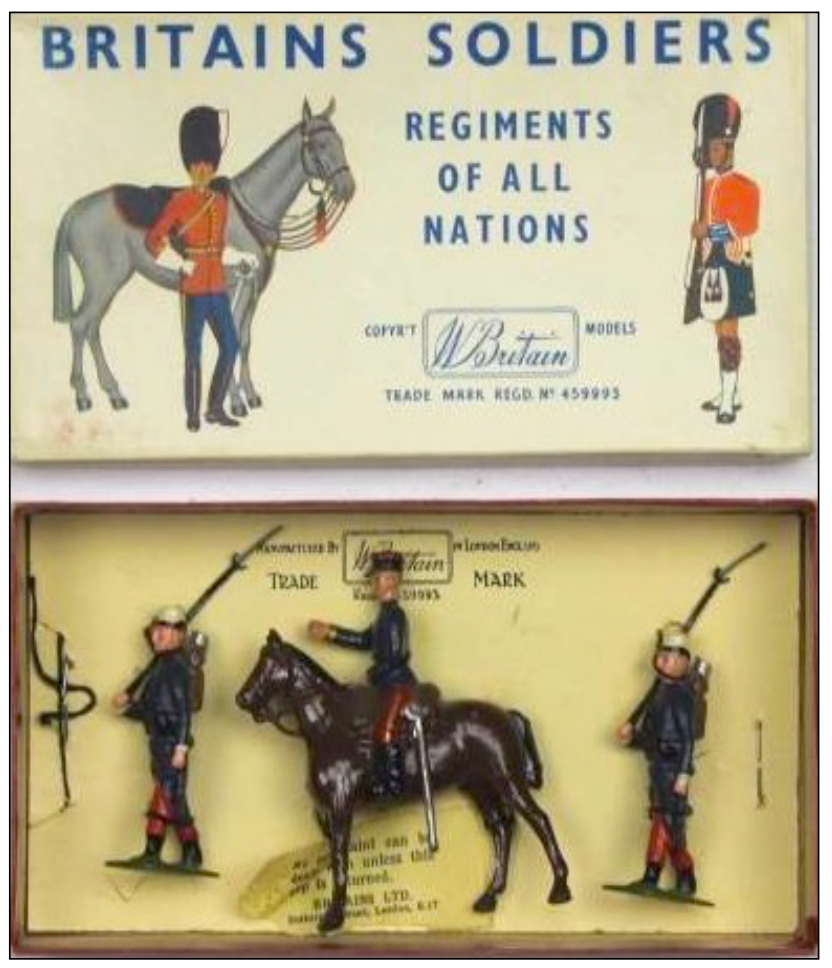
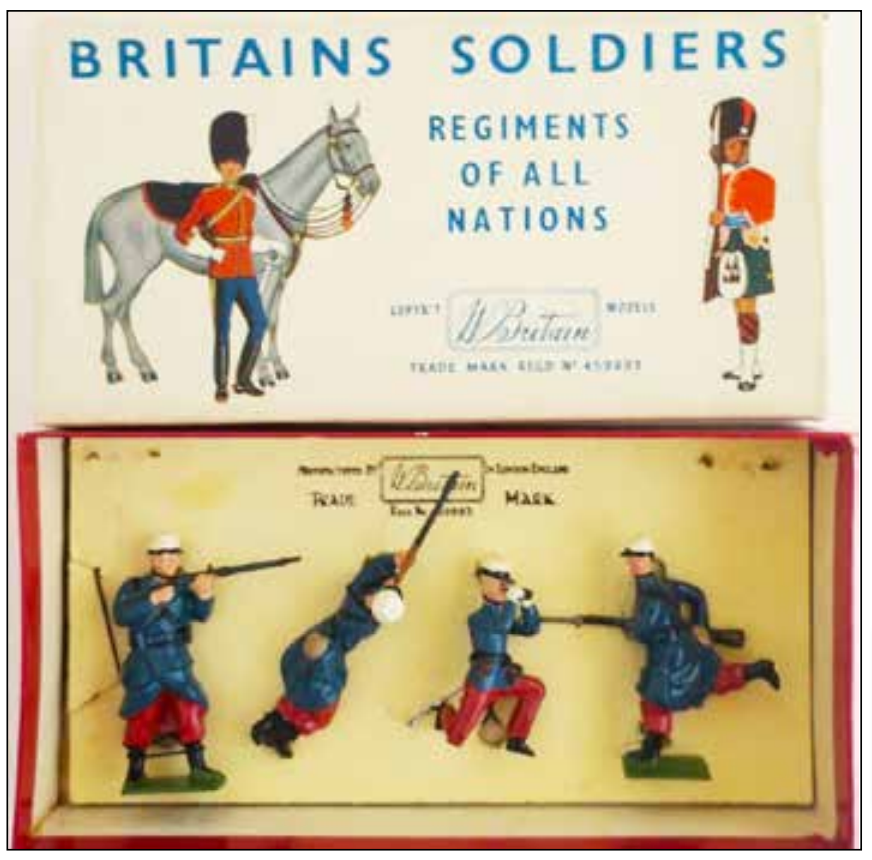
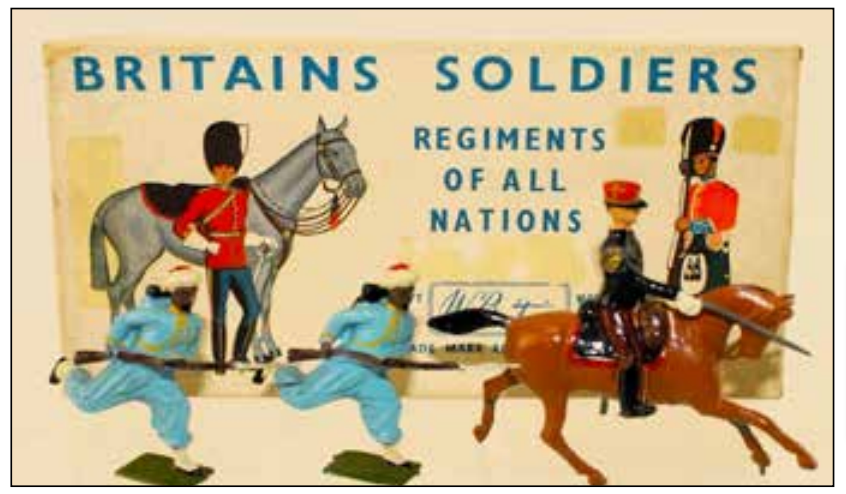
with Mounted Officer.
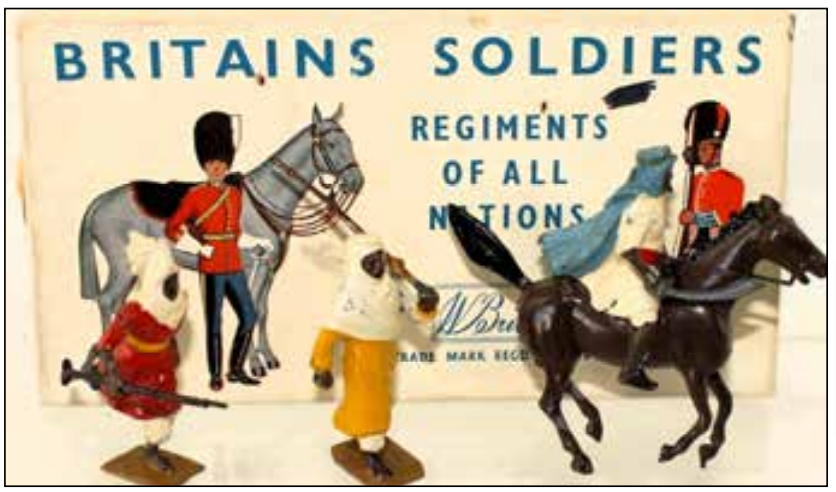
Military Picture Packs
Single figures in individual boxes were first issued in 1955. There were nine Foreign Legion and six Arab figures available in the range. The figures were all available in existing sets. The accompanying image shows some examples.
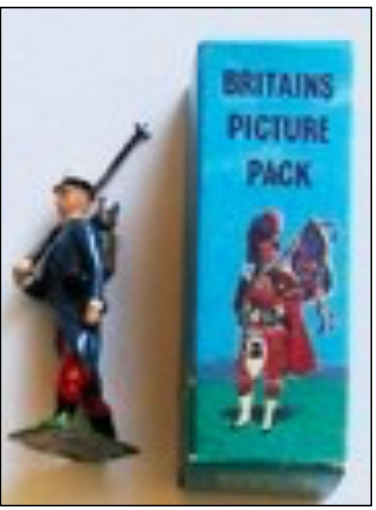
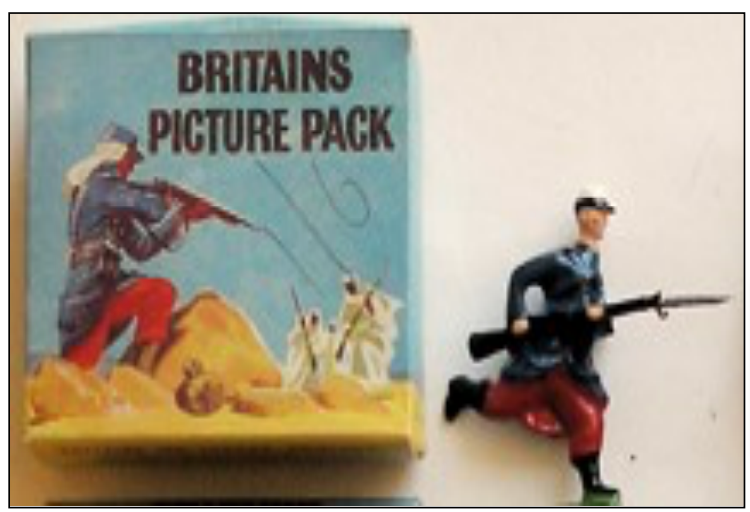
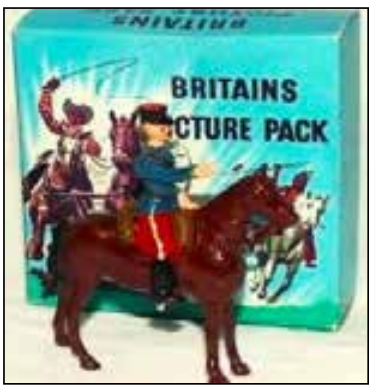
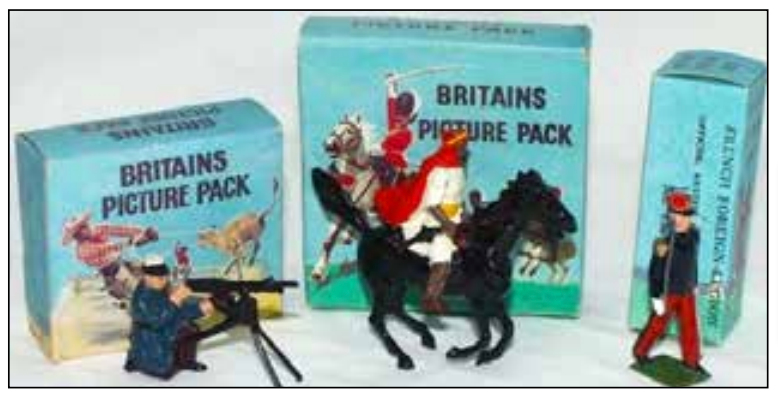
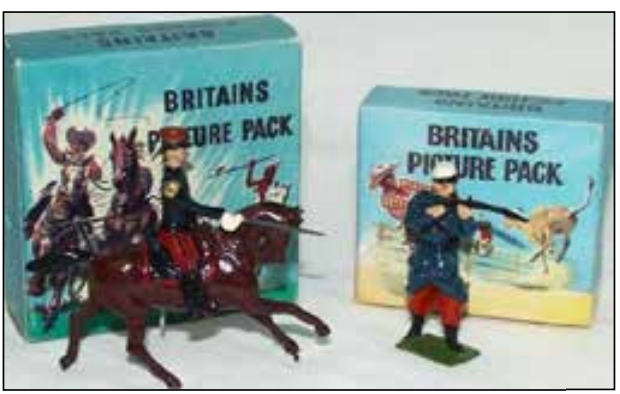
Last Hurrah!
Britains signed off with a last Hurrah that included some larger displays as well as the magnificently sculpted Algerian Spahis.
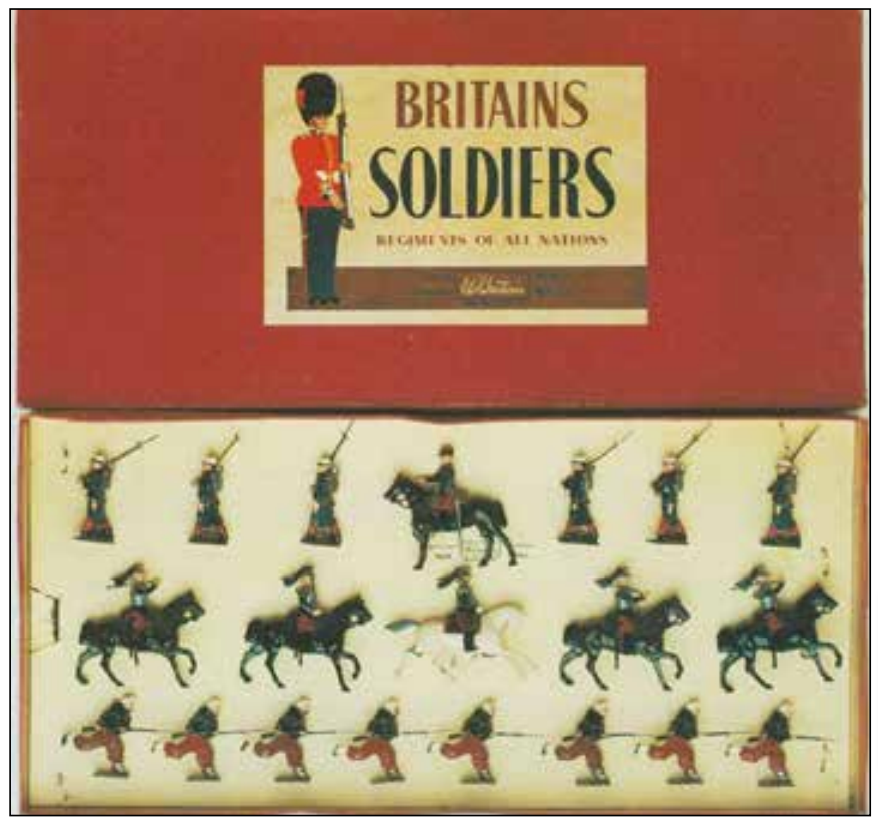
Set No. 2050, French Foreign Legion, Zouaves and Cuirassiers, was a non-catalogued set containing Cuirassiers as well as Zouaves and Foreign Legionnaires.
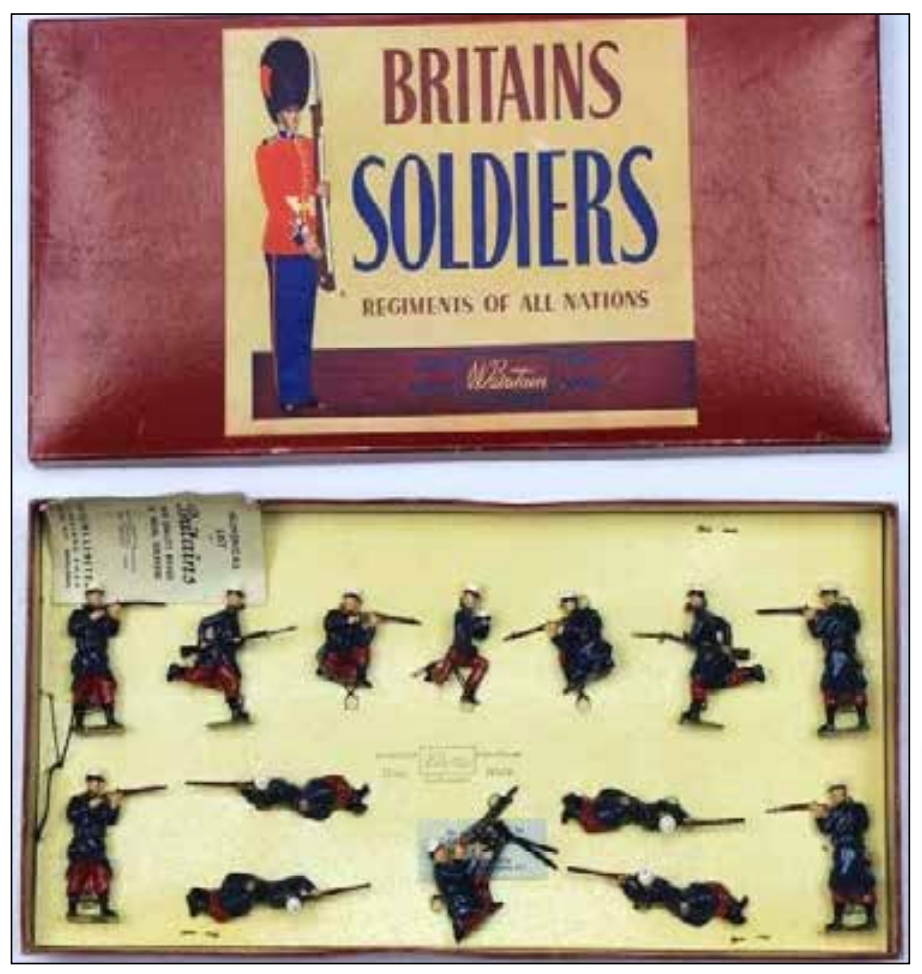
Set No. 2095, French Foreign Legion in action, 1954-1966, introduced some exciting new figures based on the pre-war Infanterie de Ligne in action in service dress. The head with Adrian helmet was replaced by one wearing a kepi.
Originally a 14-piece set, 2 pieces were removed in 1960
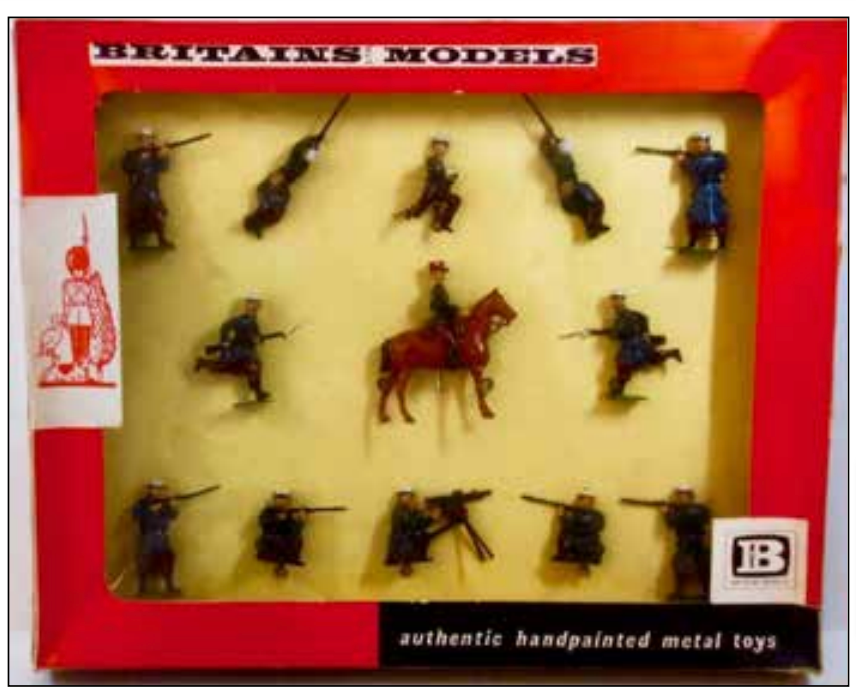
Set No. 9366, Foreign Legion firing, 1962-1966, was contained in a cellophane fronted window box to better display the contents to eager buyers. A mounted officer was added in 1962.
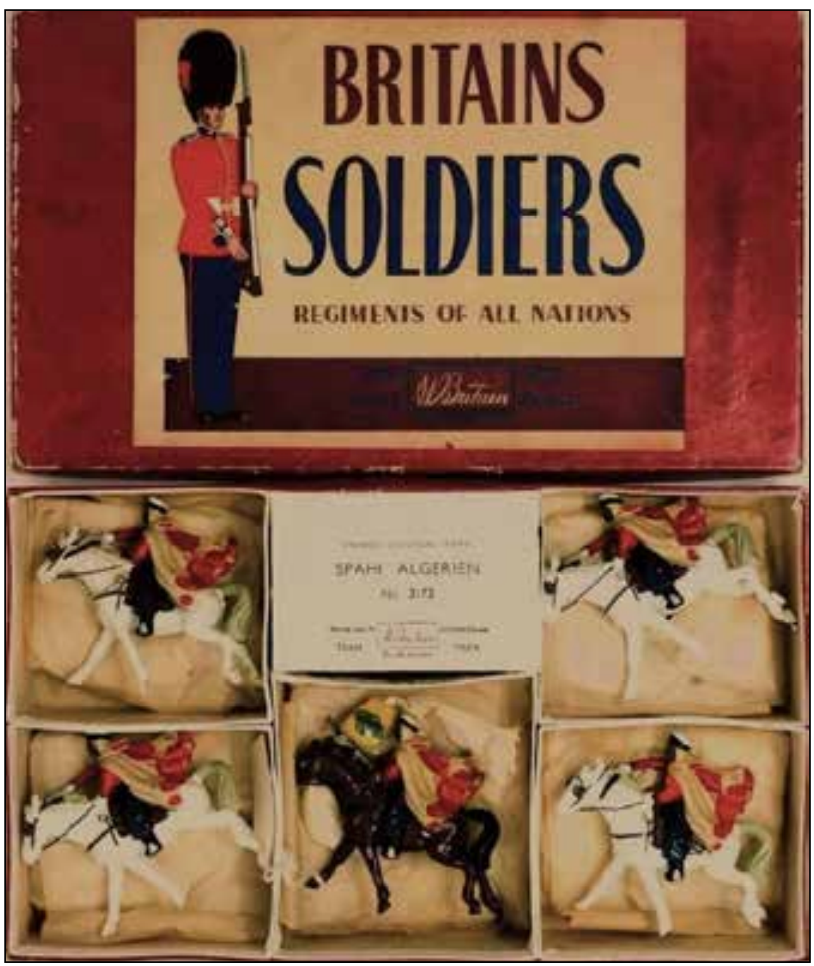
Last, but by no means least, Set. No. 2172, Troops of the Algerian Spahis, was introduced briefly between 1958-1960. Initially these figures were sold in a standard Britains box, but problems with the fragile butts of their rifles prompted a redesign to try to provide greater protection. Although undoubtedly magnificently designed figures, they cannot have been a great commercial success, as they were withdrawn
from the catalogue only a couple of years after their introduction. This means that they are highly regarded by collectors and usually attract a high price.
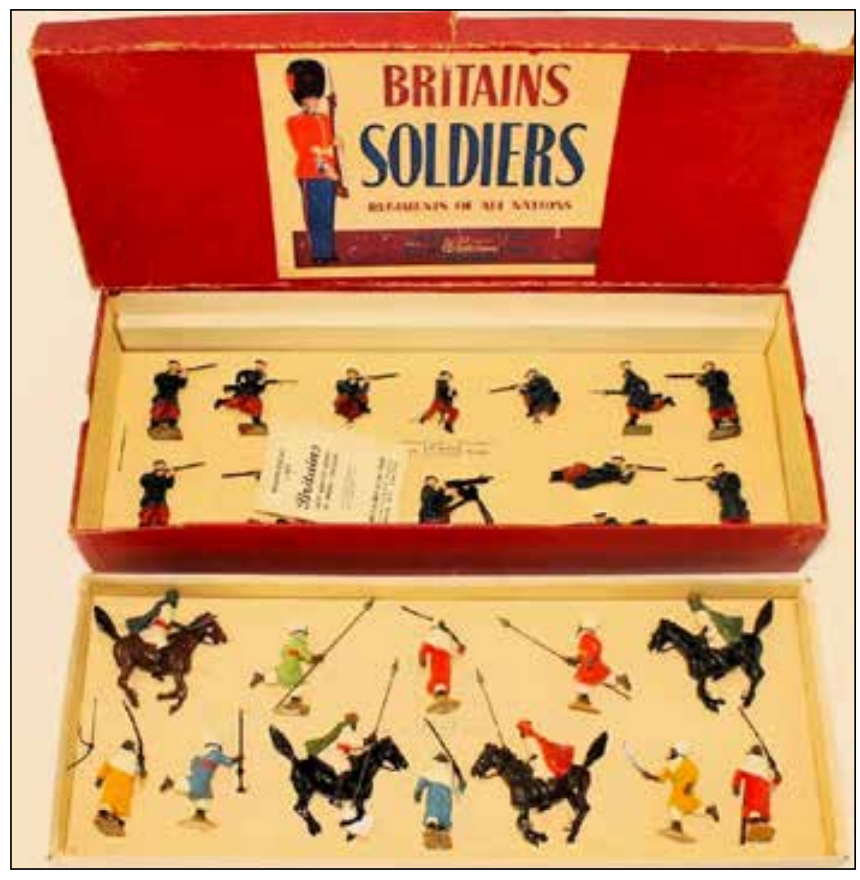
Set No. 2097 was an even more ambitious combination of French Foreign Legion and attacking Arabs, 1954-1961.
This was a 26-piece set, cut to 23 in 1960. It was a combination of sets 2095 and 2046, contained in a two layer box.
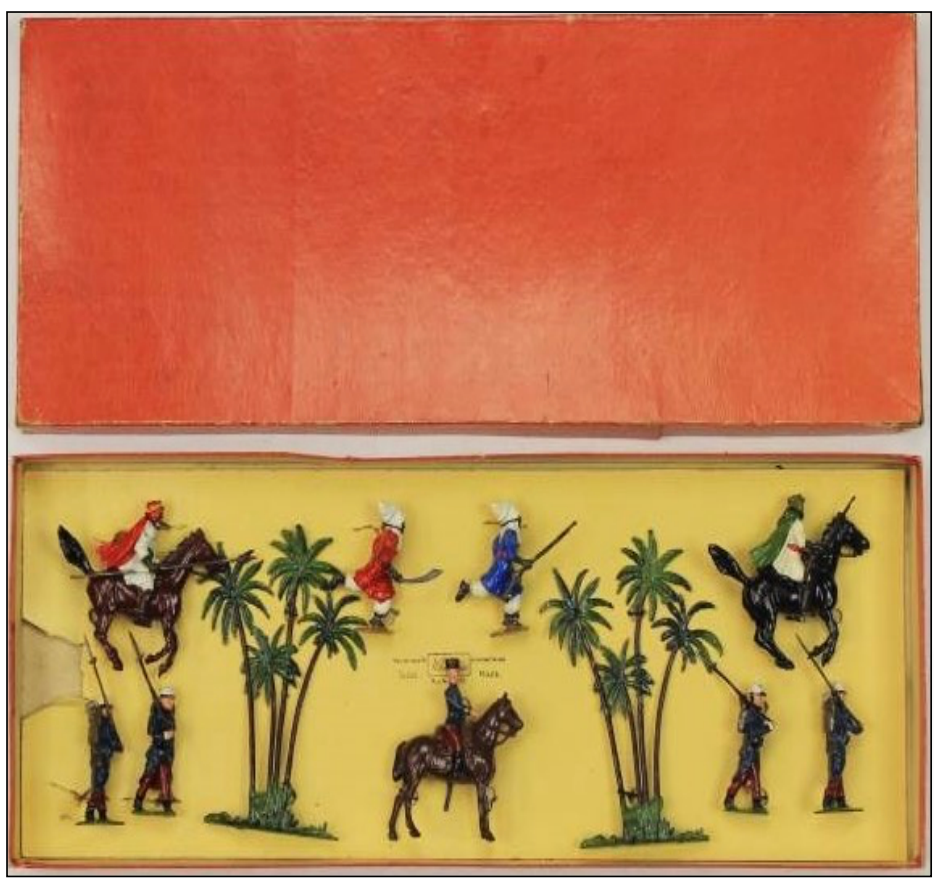
Rare French and Arabs Sales Sample box, No Label, 1950s.
Sources for Images mostly from OTS AUCTIONS.
Photographs from Joe Wallis’ Soldiers of Greater Britain and Armies of the World books are used with his permission.
